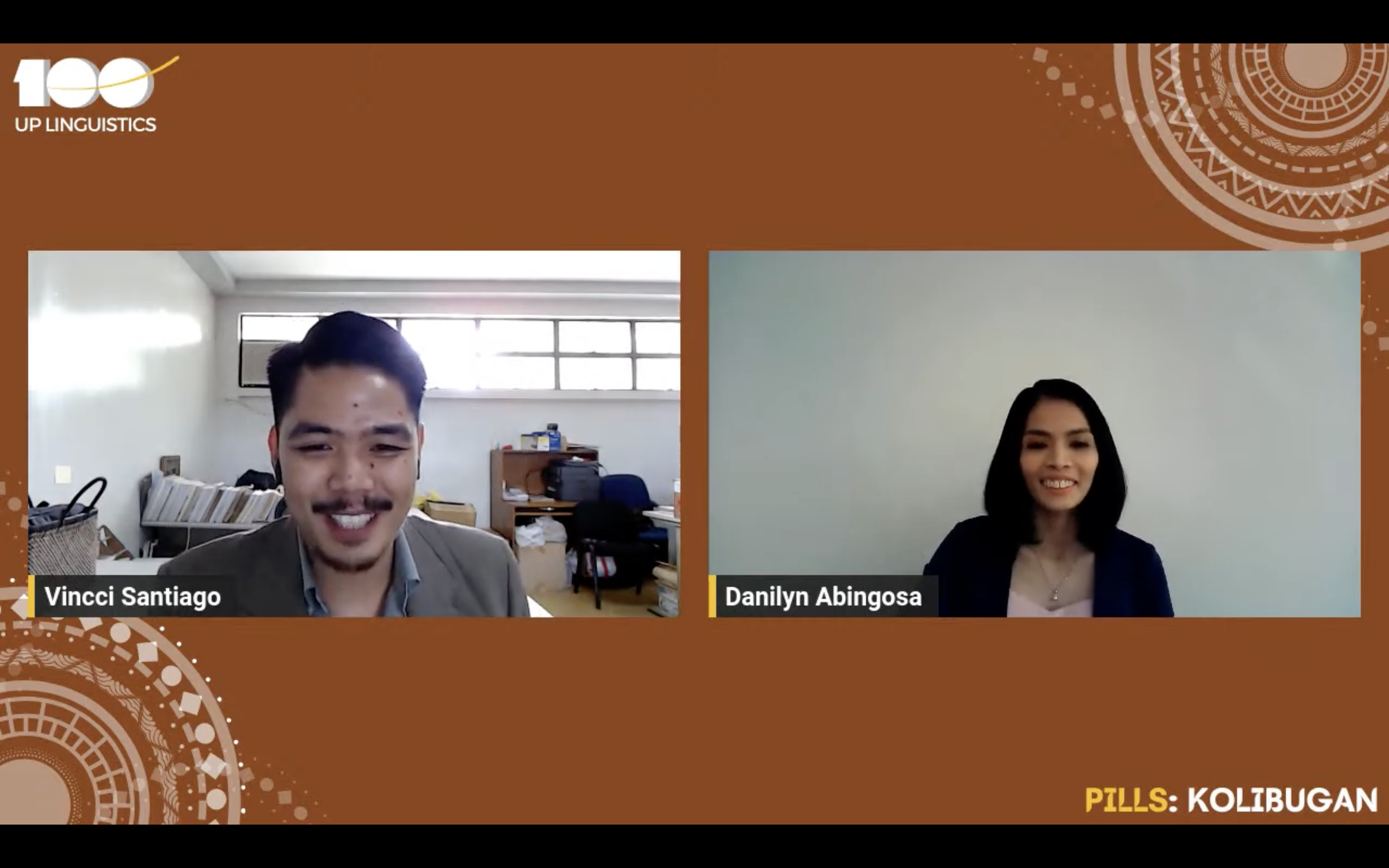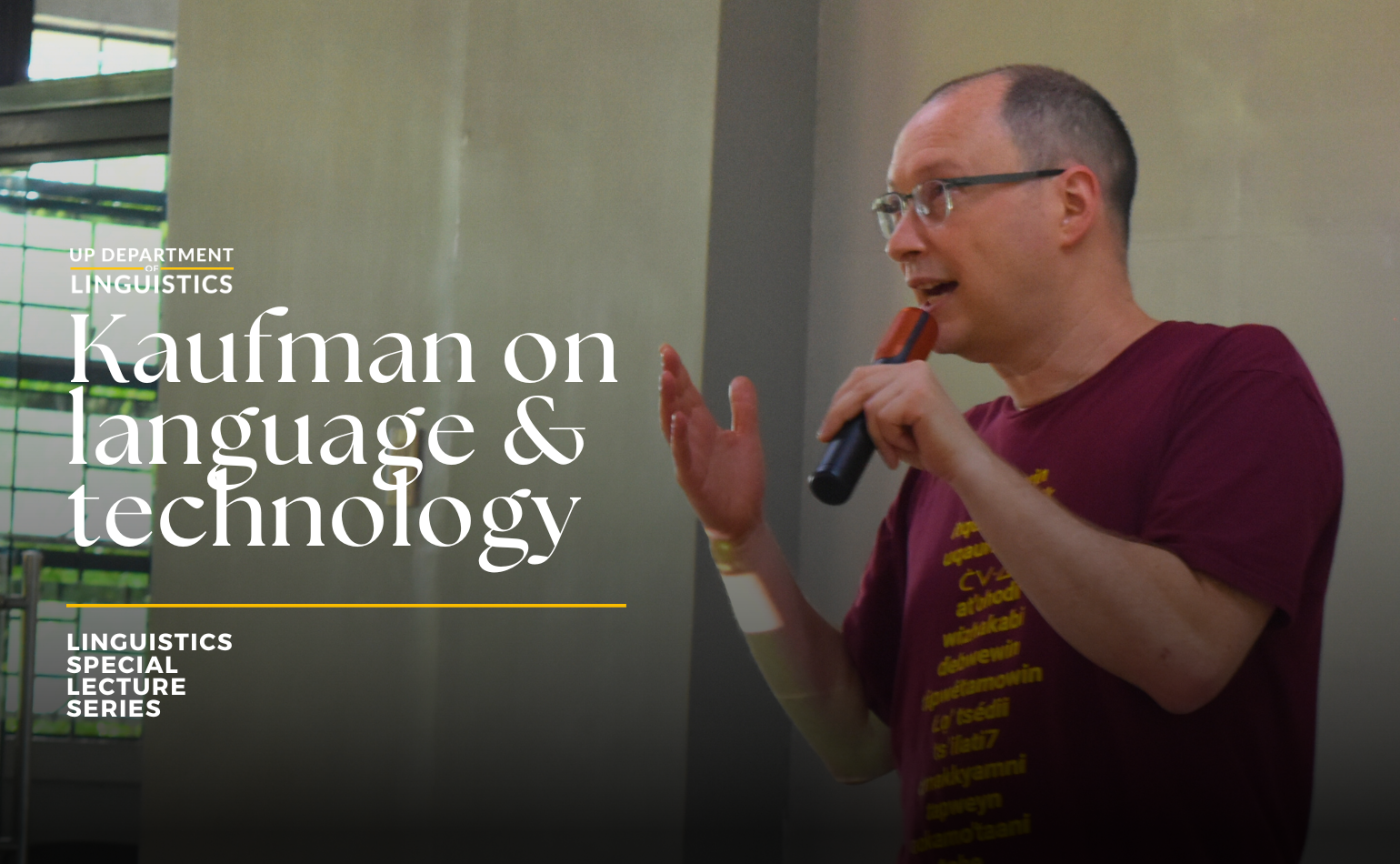
Language lovers from around the world flocked to the UP Diliman Department of Linguistics’ Youtube and Facebook accounts for the first installment of the 2023 Philippine Indigenous Languages Lecture Series (PILLS). Livestreamed on the afternoon of January 18, 2023, the event’s maiden lecture features Mindanao State University (MSU) Iligan Institute of Technology faculty member and Department alumna Dr. Danilyn T. Abingosa. Dr. Abingosa’s lecture was on the verbal affixes of Kolibugan, a language predominantly spoken on the Zamboanga peninsula. This lecture was based on her doctoral dissertation, which was supervised by Associate Professor Aldrin Lee.
Abignosa began her lecture by differentiating between the terms kalibugan, which refers to the people, and kolibugan, which refers to the language used by the ethnolinguistic group. Previous studies by Esteban (2022) and Finley and Churchill (1913) call the Kalibugan the “Moro of the Zamboanga Peninsula”, and trace their lineage to either products of relations between the Subanen and Moro people, or members of the Subanen ethnolinguistic group that converted to Islam. According to Esteban (2022), the group’s name stems from the Bisaya word, libog, meaning ‘to be confused.’
Previous studies also made the distinction between Norte Kalibugan found in the Northern section of the Zamboanga Peninsula, and Sur Kalibugan found in the South from Sibuguey Bay to Zamboanga City. Abingosa counts her research informants as being part of the Sur Kalibugan. She cites previous research by McFarland (1992) to classify Kolibugan as one of the Subanen languages. Overall, Abingosa says she was motivated in her research by the lack of published studies on the Kolibugan language, as opposed to the likes of Northern, Southern and Western Subanen.
Abingosa’s data gathering began in 2016, with a preliminary survey of her research site in Zamboanga Sibugay. The entire process took more than two years, including meeting meetings with local government unit (LGU) officials and indigenous peoples’ representatives. The entire process, which included an incident where the local government supported her amidst claims of red tagging, resulted in the detailed results Abingosa presented in her lecture.
She then presented the different affixes in Kolibugan. These affixes, she said, expressed the focus and aspect of any given verb. Through these verbal affixes, users can express the semantic relation of a verb and its complement within a sentence.
Abingosa first went over affixes that express a focus on the agent. These include the affixes -um-, mog-, mo-, miN-, and m-. Abingosa explained the different forms these affixes take when combined with stems in both realis and irrealis moods, and how these forms might change form in practice due to assimilation. For example, the affix mog- changes its ending from [g] to the voiceless velar [k] (as in mok-) when joined with a stem starting with another voiceless consonant.
Abingosa then presented other affixes that encode focus. We have the affix -an, which assigns beneficiary focus. Next, there were the affixes pog- and poN-, which both mark instrument focus. She also discussed the affix -an, which, when combined with the affix -in- denotes realis mood and focuses on locative argument. Finally, she presented the affix -on, which gives focus on the theme. She distinguishes arguments marked as theme from those that are marked as patient by explaining that while both refer to objects that can be manipulated by an agent, no change occurs in the entity of the object in the case of the former.
The lecture was then followed by a productive open forum, where questions ranging from methodological concerns to the larger language situation in the Zamboanga peninsula were entertained and answered by the speaker. In this session, both the linguistic diversity and the reality of language contact in the region were highlighted. For example, based on a similarity with other languages in the region, Abingosa found differences in the level of cognate percentages between Kolibugan and Western Subanen compared to Subanen Lapuyan. She attributes this to lexical items that entered Kolibugan from other languages in the region like Tausug.
At the end of the lecture, Abingosa was presented with a certificate of appreciation signed by Department Chair Maria Katrina S. Gallego. This first installment of PILLS is one of many events planned by the Department as it celebrates its Centennial. The second PILLs lecture will be on the Inete language and will be held in February 2023. Keep following the UP Department of Linguistics website and its social media pages for news on this and other events.
You can watch the recording of the lecture on the Department’s YouTube channel.
Published by Andre Encarnacion



